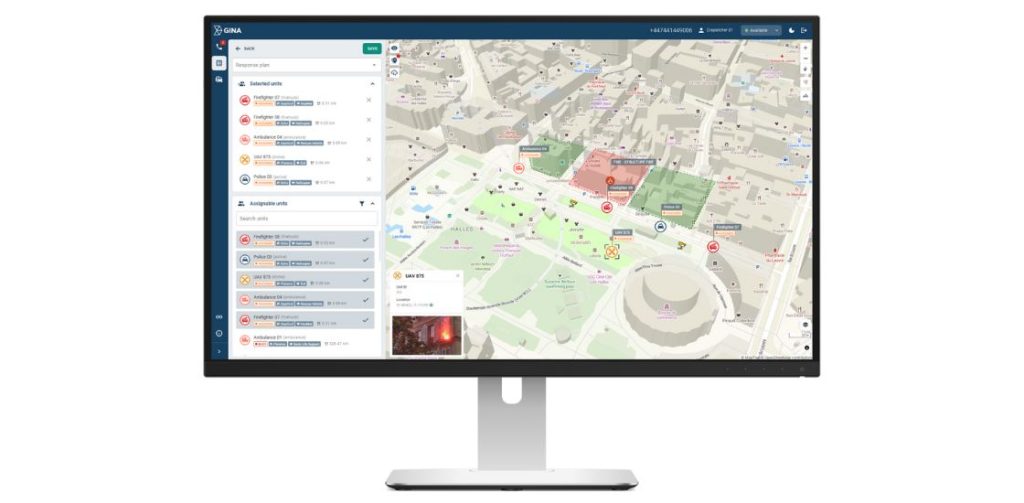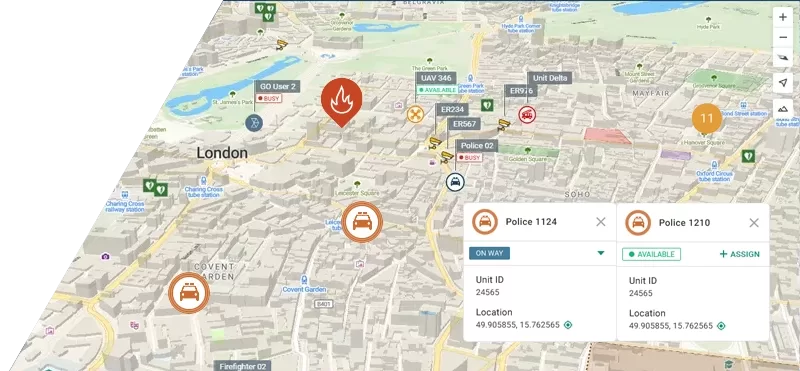Table of Contents
- What is Dispatch Management?
- Why it Matters?
- The Evolution of Dispatch Management Systems
- How it works in the Field: Real-World Scenarios
- Key Features of an Effective Dispatch Management System
- Challenges in Dispatch Management
- The Role of Smart CAD
- Future Trends in Dispatch Management
- Final Thoughts
What is Dispatch Management?
Dispatch Management refers to the process of scheduling, coordinating, and monitoring vehicles, personnel, or services from a centralized system. It’s the nerve center that ensures the right resources reach the right place at the right time, with maximum efficiency and minimal delays.
This system becomes especially crucial in industries such as:
- Emergency medical services
- Field service management
- Public safety and utilities
At its core, dispatch management bridges the gap between planning and action.
Why it Matters?
Think of dispatching as the air traffic control of your operations. Without it, you face delayed deliveries, underutilized staff, wasted fuel, dissatisfied clients, and missed deadlines. With it, operations become synchronized, scalable, and smart.
Key benefits include:
- Optimized routing that reduces travel time and fuel costs
- Real-time tracking to monitor field activities and improve accountability
- Improved customer communication through accurate ETAs
- Higher job completion rates due to better resource planning
- Reduced human error with automated scheduling
The Evolution of Dispatch Management Systems
From paper maps and radios to cloud-based platforms, Dispatch Management has come a long way. Today, dispatchers rely on advanced software that integrates GPS tracking, AI-powered scheduling, and mobile communication tools.
One such modern system making waves is Smart CAD. Known for its intuitive interface and robust capabilities, Smart CAD exemplifies how software can revolutionize traditional dispatching. It simplifies complex workflows, offering a centralized dashboard to monitor resources, manage emergencies, and keep teams connected—all without being intrusive or overwhelming.
How it works in the Field: Real-World Scenarios
Let’s bring it down to the ground. Imagine a utility company dealing with sudden power outages across multiple locations. Effective dispatch management allows them to instantly identify the nearest available crew, assign the job, monitor progress, and inform affected customers with real-time updates.
Or consider a non-emergency medical transport service juggling patient pick-ups across town. With efficient dispatch management, they can dynamically reroute based on traffic, patient readiness, or cancellations—ensuring optimal use of vehicles and staff.
In each case, the common thread is clear: without a strong dispatch framework, chaos creeps in.
Key Features of an Effective Dispatch Management System
To empower your dispatch team and streamline operations, your system should offer:
1. Real-Time Location Tracking
Track every vehicle and technician in real-time to make informed decisions and provide accurate updates.
2. Automated Scheduling and Route Optimization
AI-powered features can assign jobs based on location, availability, and skillset while optimizing routes to reduce downtime.
3. Integration Capabilities
Your dispatch tool should integrate GPS, and mobile apps for seamless workflow automation.
4. User-Friendly Interface
A cluttered interface can be counterproductive. Look for software that’s clean, intuitive, and accessible across devices.
5. Performance Analytics
Dashboards and reports help track KPIs such as on-time rates, travel time and idle time.
The Challenges of Dispatch Management
While technology has simplified dispatching, it still comes with hurdles:
- Managing last-minute changes or cancellations
- Keeping communication lines open with mobile teams
- Balancing cost-efficiency
Overcoming these challenges requires not just tools but trained dispatchers who can think on their feet and adapt quickly.
The Role of Smart CAD
Without being overly salesy, it’s worth noting how solutions like Smart CAD subtly elevate dispatch management. It’s not just about digitizing the dispatch board—it’s about intelligent automation. With Smart CAD, dispatchers gain:
- A birds-eye view of operations
- Smart assignment logic that reduces manual decision-making
- Integrated messaging to keep teams aligned
- Analytics that reveal hidden inefficiencies
In other words, it’s like giving your dispatchers a co-pilot who never sleeps.

Future Trends
The future is smarter, faster, and more autonomous.
Here’s what’s on the horizon:
- AI & Predictive Analytics: Expect dispatch systems to proactively suggest assignments.
- Drones: For some industries, traditional dispatch will include routing of unmanned vehicles.
Staying ahead means embracing these innovations early.
Final Thoughts
Dispatch Management is no longer a back-office function—it’s a strategic advantage. Whether you’re overseeing a handful of operations or hundreds per day, getting dispatch right directly influences efficiency.
And with tools like Smart CAD quietly empowering your dispatchers behind the scenes, the path to smarter operations is already laid out.










